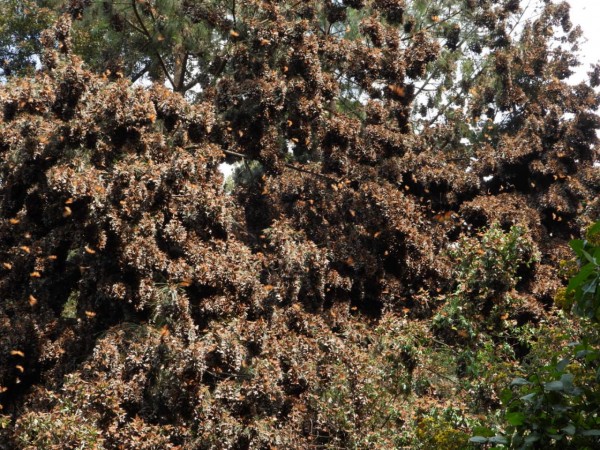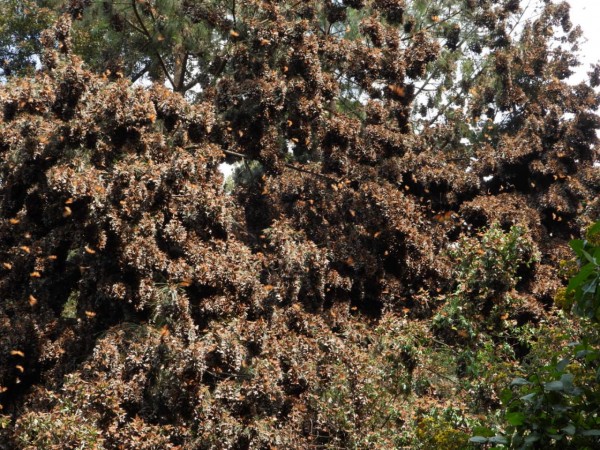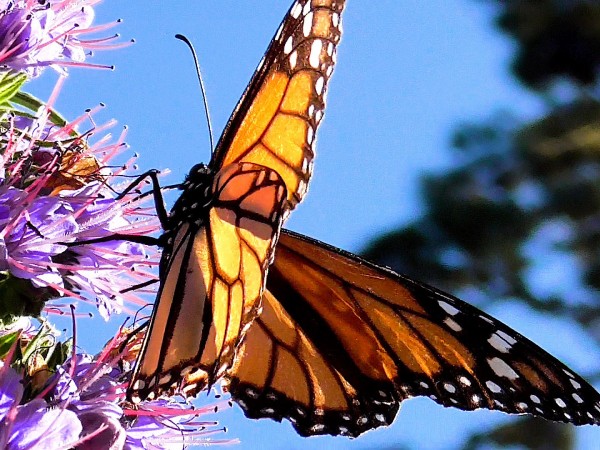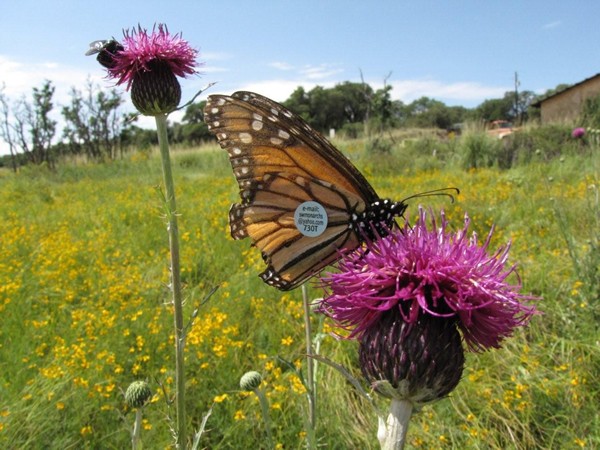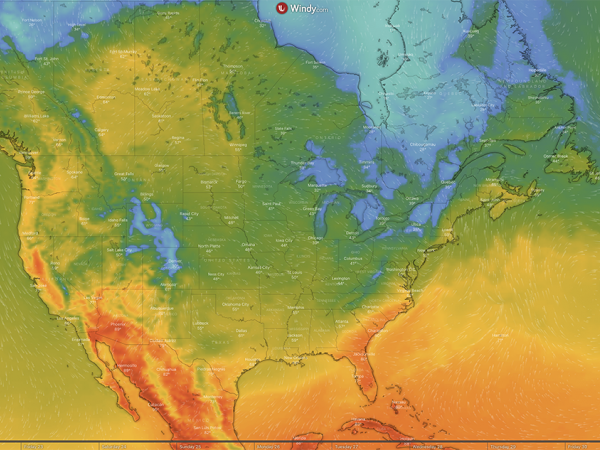Gradual Departures
Spring migration is underway! Pato and Ana Moreno and Estela Romero share news of monarchs gradually leaving sanctuaries in Mexico. And Gail Morris reports that most monarchs have left overwintering sites in California. Get ready to report your monarch and milkweed observations.
Letter from Pato and Ana Moreno: Hard to Say ‘Goodbye’
Monarch departures were noted as early as mid-February at Cerro Pelon Sanctuary, and since then more monarchs have started their migration. Pato and Ana Moreno write, "Watching the butterflies leave is like watching our friends leave, we know that we will see them again in November, but we cannot help them for the next seven months. From the moment we noticed a decrease in the colony, our sadness began. Lately we have noticed that the colony has decreased by approximately 60% of the total number of butterflies . . . According to the comments of local people of the communities on the Michoacán side, they have seen many butterflies going down in the morning, but they don’t see the same number of them returning in the afternoon, even clearer signs that they are already leaving."
Read more of Pato and Ana Moreno's Letter: Hard to Say ‘Goodbye’»
Leer más de la carta de Pato y Ana Moreno: Difícil Decir ‘Adiós’»
Letter from Estela Romero: Transition from Winter to Spring
Estela Romero has noticed changes in weather patterns and seasonal transitions within the Monarch Butterfly Biosphere reserve in recent years. And similar to Pato and Ana Moreno's observations, Estela notes that so far, spring migration has been gradual rather than sudden. She writes, "Today changes in temperatures have been more dramatic and extreme. It is not unusual to go from cold temperatures of a few centigrades to fairly warm temperatures of 15-20 centigrades. For a few years now, during the rainy season, humidity levels are drastically declining and our days are becoming increasingly dry with much evaporation . . . For the past week, under a burning sun, the monarchs have started an almost imperceptible and gradual migration north."
Read more of Estela Romero's Letter: Transition from Winter to Spring»
Leer más de la carta de Estela Romero: Transición del Invierno a la Primavera»
Letter from Gail Morris: Western Monarch Winter 2021–22 Report #10
In the Western U.S., Gail Morris reports that the monarch exodus from overwintering sites in California continues as spring migration gains momentum. Gail writes, "Few monarchs remain in coastal overwintering sites as monarchs expand their range and search for milkweed in nearby inland foothills. The Spring Migration is now fully in progress with reports of multiple monarchs in milkweed patches and first sightings of monarch eggs and larvae recorded. Keep an eye out for monarchs!"
Read more of Gail Morris' Letter: Western Monarch Winter 2021–22 Report #10»
Get Ready to Report Monarch and Milkweed Observations
Reports are already coming in north of the Monarch Butterfly Biosphere Reserve in Mexico and Texas. During this early period of migration, it can be difficult to distinguish between a migrating monarch and an overwintering monarch. Not all migrating monarchs have faded and tattered wings, complicating things even more. Please share if you think you’ve observed a migrating monarch or a winter resident. And if you’re uncertain, please let us know.
Oscar Alejandro in El Sauz, Gto, MX: " At 6:21 p.m. I observed a Monarch Butterfly specimen flying among the flower clusters of a Huizache looking for food, it is very late but there is still sunlight and the temperature is a high 21 degrees centigrade." (02/23/2022)
Eryn in McAllen, TX: "One monarch was spotted in a backyard laying eggs on milkweed, March 4 early afternoon." (03/04/2022)
A in Missouri City, TX: "Faded and slightly tattered female. Nectared on dianthus just for a moment. I think it may be too early for the migrating population coming up from Mexico, so assume it's a 'resident'. Tested for OE: perhaps 2-3 spores, max. Released." (03/05/2022)




